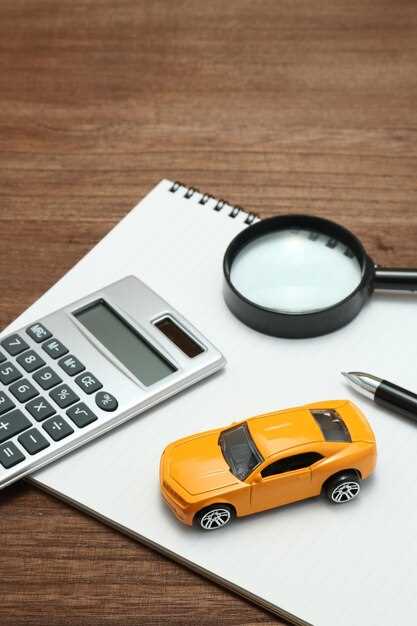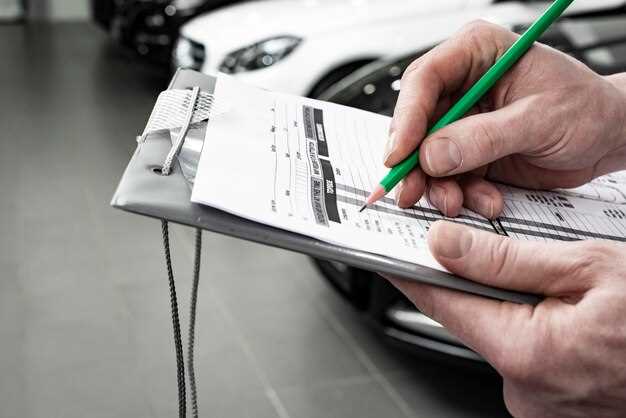
Embarking on the journey of purchasing a Corrado as a project car is an exciting endeavor that promises both challenges and rewards. Before diving into the world of modifications and restorations, having a thorough understanding of what to consider during the pre-purchase phase is crucial. This checklist will guide you through essential factors to evaluate, ensuring you make an informed decision.
From mechanical components to design elements, each aspect of the vehicle can influence the overall project experience. It is essential to recognize potential red flags that could lead to increased costs and efforts in the future. By systematically addressing these points, you can avoid common pitfalls and set yourself up for a rewarding restoration journey.
Whether you are a seasoned car enthusiast or a newcomer to the project car scene, this checklist aims to simplify the buying process. Prepare yourself with the right knowledge, and you’ll be well on your way to reviving a classic Corrado into a vehicle that reflects your passion and creativity.
Assessing the Car’s Condition and History

When considering a pre-purchase of a Corrado project car, assessing its condition and history is crucial. Start with a thorough inspection of the vehicle’s exterior and interior. Look for signs of rust, especially around the wheel wells, frame, and undercarriage. Check for paint inconsistencies which may indicate past repairs or repainting. Ensure that the body panels align properly, as misalignment can signify previous accidents.
Next, assess the engine and mechanical components. Verify that the engine runs smoothly without unusual noises. Check for leaks or signs of maintenance neglect. Investigate the condition of the transmission, brakes, and suspension, as these can significantly impact the project’s feasibility and cost. A well-documented service history can provide insight into the car’s maintenance routine and previous repairs.
Research the vehicle’s title history using services that reveal accidents, damage, and previous ownership. Confirm that the title is clear and free of liens. If available, obtain a vehicle history report to gain comprehensive information about the car’s past. Also, consider contacting previous owners for their experiences and insights regarding the car’s reliability and performance.
Finally, evaluate the cost of necessary repairs and parts replacement against your budget and project goals. Understanding the true condition and history of the Corrado will help you make an informed decision and ensure your project starts on the right foot.
Understanding the Market Value and Pricing

When embarking on a pre-purchase journey for a Corrado project car, understanding the market value is crucial. The pricing of these vehicles can fluctuate significantly based on factors such as condition, rarity, and modifications. It’s essential to conduct thorough research to ensure you’re making an informed decision.
Begin by evaluating the current market trends for the Corrado model you are interested in. Websites such as classic car forums, auction sites, and enthusiast groups can provide valuable insights into recent sales prices and market demand. Pay attention to the differences in pricing for various configurations, including engine types and special editions.
Below is a table summarizing key factors that influence the market value of a Corrado project car:
| Factor | Description | Impact on Value |
|---|---|---|
| Condition | The overall state of the car, including mechanical and aesthetic aspects. | High impact; better condition leads to higher pricing. |
| Mileage | The total distance driven; generally, lower mileage is preferred. | Moderate impact; lower mileage can increase desirability. |
| Rarity | Limited editions or models produced in small numbers. | High impact; rare models command premium prices. |
| Modifications | Aftermarket changes that can alter performance or aesthetics. | Variable impact; some mods can enhance value, while others may detract. |
| Documentation | Service history, ownership records, and original documentation. | High impact; well-documented cars are often valued higher. |
As you assess potential Corrado project cars, keep these factors in mind to gauge their market value accurately. Additionally, consider engaging with automotive appraisers or experienced enthusiasts who can provide further insights. Making use of this knowledge will empower you in negotiations and ensure you invest wisely in your new project.
Evaluating Required Repairs and Modifications
When considering a Corrado project car, it’s essential to thoroughly evaluate the required repairs and modifications during the pre-purchase phase. Begin by inspecting the vehicle’s condition from top to bottom, focusing on areas prone to wear and damage. Check the body panels for rust, dents, and paint imperfections, as these can indicate deeper structural issues or neglect.
Next, examine the engine and mechanical components. Look for signs of leaks, corrosion, and unusual noises. A comprehensive diagnostic test can help assess the engine’s health and identify potential mechanical repairs. Pay attention to the suspension system; worn shocks and struts may require immediate attention and can significantly affect the vehicle’s handling.
Additionally, evaluate the car’s electrical system. Check all lights, gauges, and electronic components for functionality. Issues with wiring or electronics can be costly to fix, so consider these in your budget for repairs. Don’t overlook the condition of the brakes and tires, as they are crucial for safe operation and could be an immediate factor in your decision.
After assessing the current state of the car, think about potential modifications. Determine your goals for the project–whether you aim for improved performance, aesthetic upgrades, or both. Investigate aftermarket options for parts and enhancements that align with your vision. This will aid in estimating future expenses and time needed to complete the modifications.
Creating a detailed list of all required repairs and desired modifications will help you make an informed decision. Use this checklist as a bargaining tool during negotiations, allowing you to factor in the costs of repairs and upgrades into the purchase price. Carefully evaluating these elements ultimately leads to a more satisfying ownership experience.
Inspecting Key Components and Mechanical Parts
When considering a pre-purchase of a Corrado project car, it’s essential to thoroughly inspect key components and mechanical parts to ensure you’re making a sound investment. Start with the engine, checking for any signs of leaks, unusual noises, or excessive wear. Pay particular attention to the oil condition and level, as well as the presence of any warning lights on the dashboard.
Next, inspect the transmission. Engage both the clutch and gears to ensure smooth operation. Listen for grinding noises or any difficulty in shifting, which may indicate underlying issues. Verify the fluid condition and level, as this can provide insights into the transmission’s health.
The suspension system is another critical area to evaluate. Check for any signs of damage or wear on components such as shocks, struts, and control arms. A test drive can help assess the ride quality; listen for any clunks or rattles that may suggest problems with the suspension setup.
Brakes also require careful examination. Inspect the pads, rotors, and lines for wear or corrosion. A thorough brake test during the drive will help determine their effectiveness and responsiveness. Replace any worn components to ensure safety on the road.
Don’t overlook the electrical system. Test all lights, signals, and electrical features, including power windows and locks. A malfunction in this area can lead to costly repairs down the line.
Finally, assess the cooling system. Look for leaks in hoses, the radiator, and the water pump. Check the coolant level and condition; a neglected cooling system can lead to severe engine damage.
By meticulously inspecting these key components and mechanical parts, you can gain a clearer understanding of the Corrado project car’s condition and make a more informed pre-purchase decision.
Verifying Documentation and Ownership Records
When considering a pre-purchase of a Corrado project car, verifying the documentation and ownership records is crucial for ensuring a smooth transaction and future ownership. Start by requesting the title document from the seller. Ensure that the title is clear and free of liens, which indicates that the seller has legitimate ownership without any financial obligations attached to the vehicle.
Check for any discrepancies in the Vehicle Identification Number (VIN). This number should match on the title, registration, and the physical car itself. A mismatched VIN may indicate potential issues such as theft or incorrect documentation. It’s advisable to run a vehicle history report using the VIN to uncover any previous accidents, odometer discrepancies, or major repairs that could impact the car’s value.
Inquire about any service records, receipts, or modifications made to the car. These documents not only provide insight into the vehicle’s maintenance history but also reassure you about the project car’s condition. A well-documented history can bring added value and peace of mind to your pre-purchase decision.
Additionally, consider contacting previous owners if possible. Understanding the car’s history from different perspectives can reveal important information about its past usage and any potential issues. Lastly, ensure that the seller is the rightful owner by verifying their identification against the title. This simple step can help prevent complications later on and secure your investment in the Corrado project car.
Planning for Insurance and Future Expenses
When considering the purchase of a Corrado project car, it is crucial to plan for insurance and future expenses. These costs can impact your overall budget and project timeline, so thorough preparation is essential.
- Insurance Considerations
- Check availability of classic car insurance for your Corrado, as some providers specialize in insuring project cars.
- Get quotes from multiple insurance companies to find the best coverage options and premiums.
- Consider the value of your project car after restoration when selecting a policy that offers agreed value coverage.
- Understand the requirements for insurance, such as obtaining a policy before you purchase the car.
- Budgeting for Future Expenses
- Plan for routine maintenance costs, including oil changes, brake pads, and tires.
- Research potential repair costs for common issues associated with the Corrado model.
- Allocate funds for upgrades and modifications that enhance performance or aesthetics.
- Factor in registration fees and taxes once the car is ready for the road.
- Consider the long-term costs of storage and eventual resale value when budgeting for the project.
- Emergency Fund
- Create a financial buffer for unexpected repairs or necessary replacements during the restoration process.
- Set aside a percentage of your project budget specifically for unplanned expenses.
By carefully planning for insurance and future expenses, you can ensure that your Corrado project car remains an enjoyable endeavor without financial surprises. Thorough assessment and budgeting will contribute greatly to a successful restoration experience.












